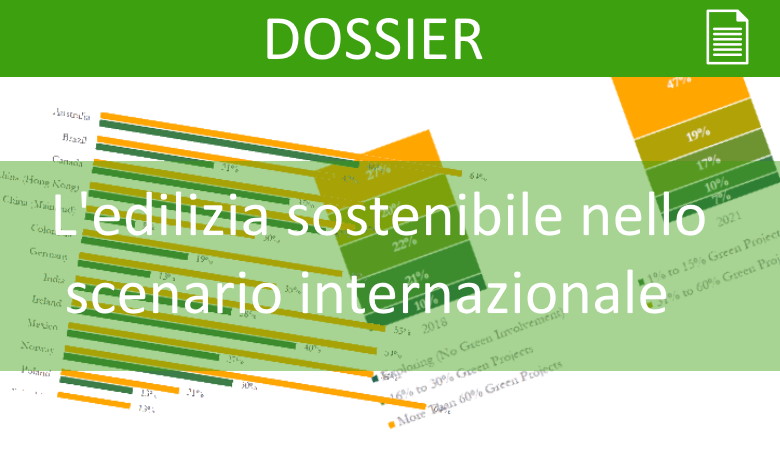Dossier of the Polo Green Home on sustainable construction in the international scenario
In the context of the current crisis situation, sustainable innovation will represent one of the main economic drivers of the construction sector in the aftermath of the end of the pandemic. The first analyzes in this regard offer still uncertain estimates on the extent of the impact of this new and profound crisis, however they agree that what opens next will be a totally different scenario in which one should find a lot of space renewed attention to the environment and people's quality of life.
In this sense, the report, even if based on data as of December 2019, outlines interesting trending elements.
In recent years, however, a new approach has become more attentive to the issues of biocompatibility and construction sustainability in order to limit the impact on the environment. A model that concerns new buildings, which must be made in compliance with very restrictive technical regulations, and buildings that need recovery and redevelopment actions. The transition to sustainable construction is today more than ever a necessity to improve the quality of life of citizens, decrease energy consumption, give more value to homes, reduce polluting emissions.
Based on these assumptions, il relationship intends to examine the recent global market trends in the sustainable construction sector, referring to studies and research conducted by internationally accredited organizations and companies.
The report is structured in five chapters. The first examines the level of diffusion of sustainable construction activities with disaggregated analyzes by country and type of construction. The second takes into consideration the direct benefits that sustainable construction produces in terms of reducing management costs, decrease in the payback time of investments and increase in the asset value of buildings. The third focuses on barriers and enabling factors for the green segment. The fourth chapter concerns the use of certification systems, while the latter analyzes future trends in sustainable construction.
All in all, data updated to December 2019 seem to outline an expanding sector, with particular reference, in relative terms, in the context of new commercial constructions. The Scandinavian area, the Middle Eastern basin and Oceania are the macro-regions that show the most significant increases.
In the face of the decrease in management costs, an element that continues to be identified as the main economic benefit deriving from green investments, the trend of recent years indicates for bio buildings a increase in asset value it's a reduction of payback time.
Nonetheless, the most relevant barrier remains that of higher initial costs. Among the factors that contribute to the development of the sector, the growing customer demand as well as the environmental regulations.
Download: Dossier Sustainable construction on the international scene (dic. 2019)






